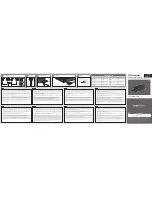
O P E R AT I N G I N S T R U C T I O N S | Bulkscan®
8014829/ZV98/2018-05-07| S I C K
Subject to change without notice
5 7
ELECTRICAL INSTALLATION
6.3.8.3
Power supply BC9050
Bus Terminal Controller supply (Us)
The Bus Terminal Controller requires a supply voltage of 24 V
DC.
The connection is made by means of the upper spring-loaded terminals labelled 24 V
and 0 V. This supply voltage is used for the electronic components of the Bus Coupler
and Bus Terminal Controllers and (via the K-bus) the electronic components of the Bus
Terminals. It is galvanically separated from the field level voltage.
Fig. 46: Power supply BC9050
Power contacts supply (Up)
The bottom six connections with spring-loaded terminals can be used to feed the supply
for the peripherals. The spring-loaded terminals are joined in pairs to a power cont-
act. The feed for the power contacts has no connection to the voltage supply for the
BC9050 electronics.
The spring-loaded terminals are designed for wires with cross-sections between 0.08
mm
2
and 2.5 mm
2
.
The assignment in pairs and the electrical connection between feed terminal contacts
allows the connection wires to be looped through to various terminal points. The current
load from the power contact must not exceed 10 A for long periods. The current carry-
ing capacity between two spring-loaded terminals is identical to that of the connecting
wires.
Power contacts
On the right hand face of the Bus Terminal Controller there are three spring contacts for
the power contact connections. The spring contacts are hidden in slots so that they can
not be accidentally touched. By attaching a Bus Terminal the blade contacts on the left
hand side of the Bus Terminal are connected to the spring contacts. The tongue and
groove guides on the top and bottom of the Bus Terminal Controllers and of the Bus
Terminals guarantees that the power contacts mate securely.
















































